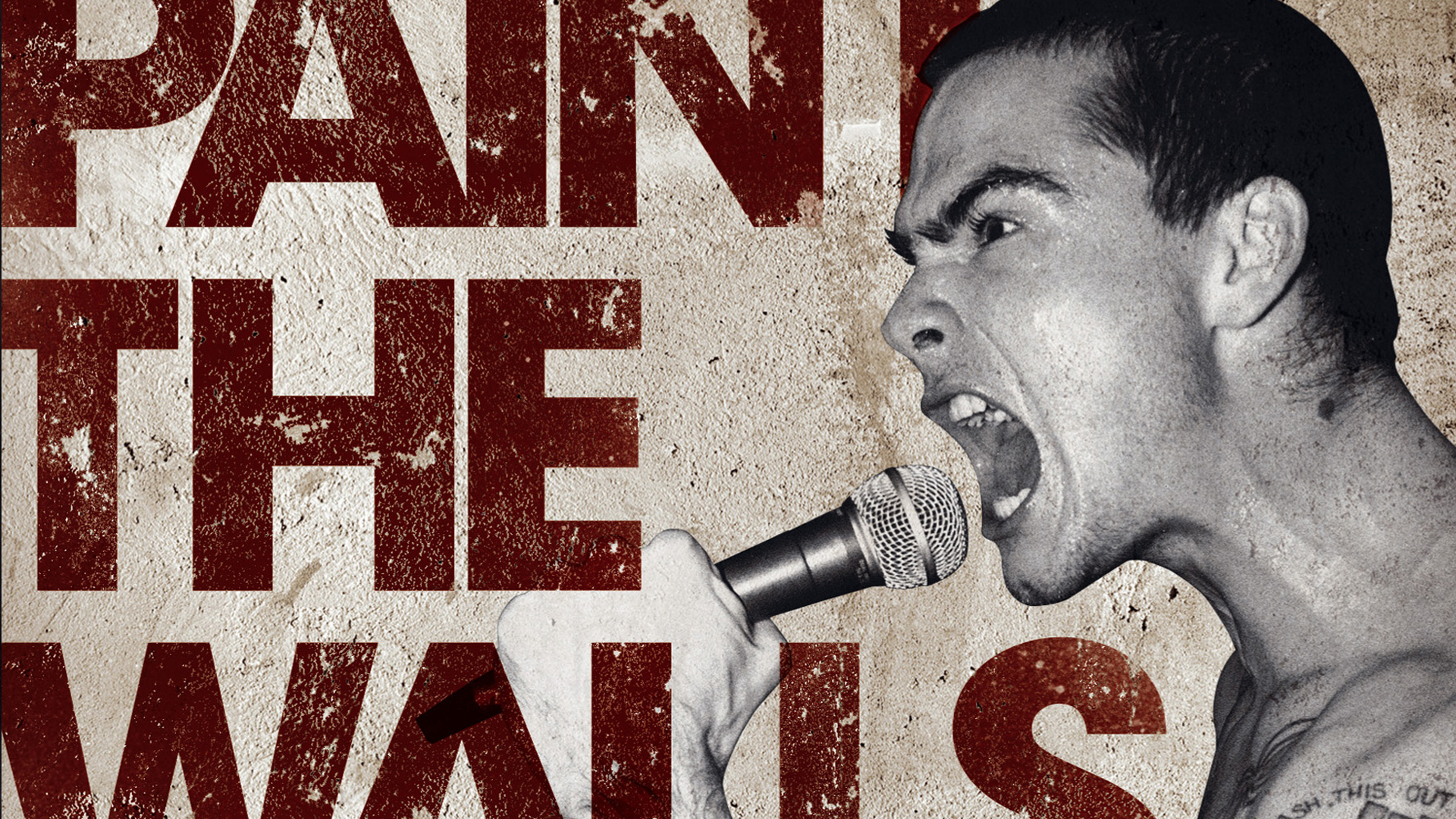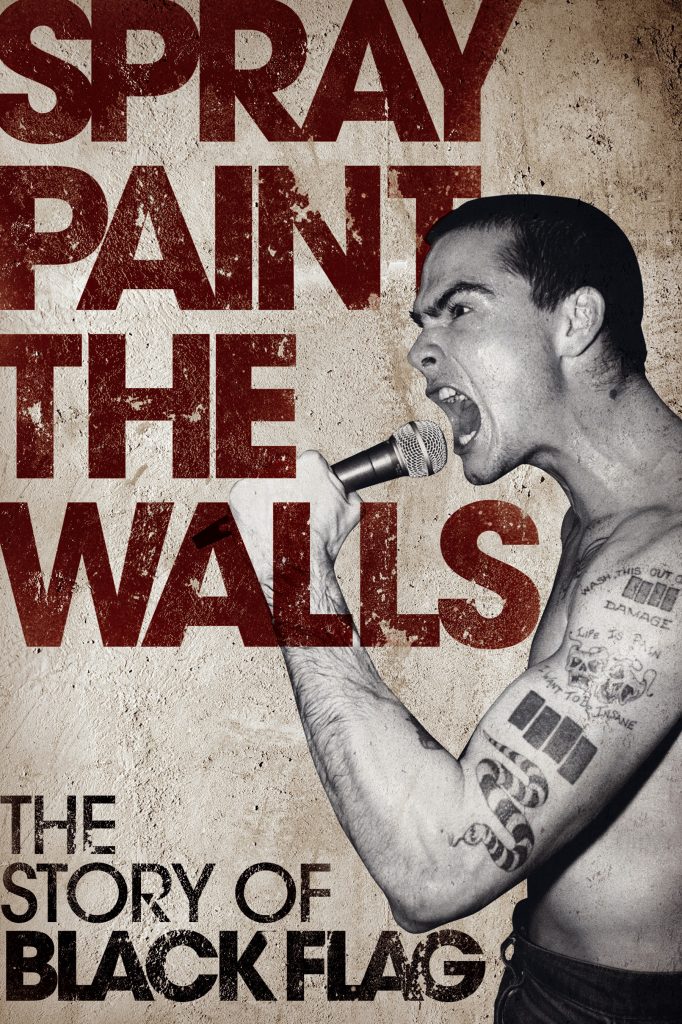By Kurt Morris
Razorcake
January 23, 2012
The almighty Black Flag . . . what can you say? The Flag, if not the favorite, is certainly in my top three favorite bands ever. And I don’t shun any of their stuff, either. In fact, I celebrate their entire catalog: I love everything from The First Four Years to In My Head (including the B-side of My War)—all of it. I find an emotional and mental connection with their lyrics and the alienation they displayed. The insanity of Keith Morris’ vocals, the intensity and anguish of Henry Rollins’ growls, all displayed through great musicianship, especially Greg Ginn’s amazing guitar work. It’s some of the most creative guitar playing I’ve ever heard, especially as it relates to hardcore punk.
That all being said, Spray Paint the Walls has a lot to live up to and, for the most part, it succeeds. It follows a chronological history of the band. Each of the chapters takes the title of a Black Flag song and starts with a quote from one of the members of Black Flag or someone associated with them. The details can be impressive. While I’m not a scholar on the band, I did consider myself someone who was fairly knowledgeable of them. But even I learned a lot. I learned about the background of many of the members: where they were raised, what their family life was like, how they got into playing their instrument, and how they got into punk. It was interesting and helped me come to a better grasp of how Black Flag was shaped. There was also a lot of context provided for lyrics. For example, I learned that “Room 13” was the number of the room that Greg Ginn’s girlfriend lived in at the time the song was written. I learned that the Strand mentioned in “Wasted” is a path near the ocean in Hermosa Beach, and that “My War” is about Greg Ginn.
Author Stevie Chick did a fine job of compiling a lot of various sources into a generally fluid narrative, including interviews with band members, roadies, friends of the band, and those who worked at SST (Black Flag’s record label) to describe the motivations of individuals in the band. He accurately described the sound of Black Flag better than just about anyone else I’ve read and he did so without leaning on clichés, silly metaphors, blanket generalizations, or putting in his two cents when he easily could have done so. His decision to include a number of black and white photos of Black Flag in the middle of the book is a superb idea. They capture the intensity and energy of the band live, as well as showing some of their more casual side away from the stage.
I certainly found the book engaging and hard to put down, but there were numerous problems, although none of them fatal. Primarily, while I understand it may be near impossible to get it to happen, the lack of quotations from Ginn and Rollins (beyond sporadic interviews they’ve provided in the past and material pulled from Rollins’ Get in the Van) left a lot unsaid. While Get in the Van is incredibly helpful, even Rollins has admitted he left a lot out of the book.
Furthermore, Spray Paint the Walls had many of the band members making harsh accusations against Ginn. While they all acknowledged his superior skills and tough work ethic, they also pointed out a number of personality flaws that drove members out of Black Flag. Ginn may have been the propellant for the brilliance of the Flag, but, according to many in the band’s circle, he was also the reason for its ultimate demise. An inability to hear Ginn’s side of the story left the book with a big hole that needed filled.
Due to their superfluous nature, there were a number of portions of the book I skimmed or passed over entirely. At times, Chick segued into a history of Southern California punk, or, more specifically, on bands such as Redd Kross or the Minutemen. A chapter was flowing well and—in the midst of providing some context to Black Flag or a member of the band—someone not directly part of the Black Flag camp was mentioned and their history was given. It was not integral to the story that the reader be aware of how, say, Steven McDonald from Redd Kross got involved in punk. There were multiple times when Chick provided history of loosely affiliated individuals and it broke severely with the fluidity of the narrative. If someone such as McDonald had some thoughts to share about Black Flag, great, but there was no need for anything more than identifying who he was in the scene.
Chick’s writing struggled at making a decision as to whether he was writing a biography of Black Flag or if he’d rather have written a history of Southern California punk. While some might argue that the two must be told together, based on the material written about Black Flag alone, Chick seemed quite capable of creating an all-encompassing picture of the band on its own without including the SoCal hardcore scene material.
While the interviews for the book were key, many of the interviews were comprised of long blocks of quotations that ran over the course of many paragraphs. It was occasionally confusing as to who was speaking, as their commentary might run a page or more. Further editing of these blocks (any fan of punk knows Mike Watt and Keith Morris are ramblers) would have been helpful in seeking out the most essential material about the band. These interviews were often cited using footnotes, but in a very sporadic manner. While the notation can be helpful, Chick should have either done the footnotes fully or not used them at all.
This wasn’t the most comprehensive biography of Black Flag (I know it’s not Chick’s fault, but without Ginn and Rollins chipping in, things will never feel entirely complete). If you read Spray Paint the Walls along with Rollins’ Get in the Van and the chapter on Black Flag from Michael Azerrad’s Our Band Could Be Your Life, however, you’ll get about the most well-rounded picture you can hope for of one of the best punk bands in history. All complaints aside (hey, I’m a critic and a huge Black Flag fan—you can’t expect me not to nit pick), Spray Paint the Walls is essential in filling a large piece of the story of Black Flag heretofore not compiled in one place. –Kurt Morris (PM Press, PO Box 23912, Oakland, CA 94623)







